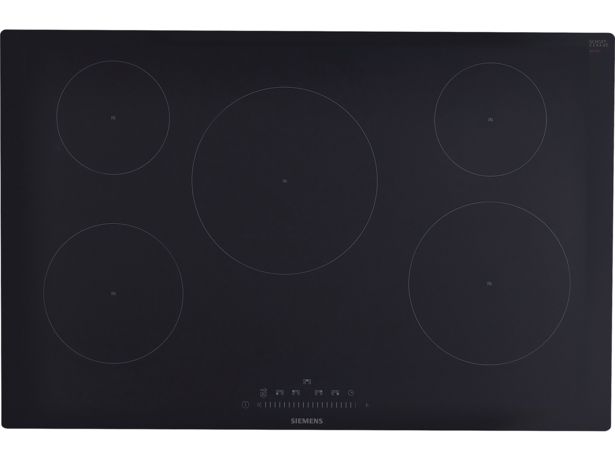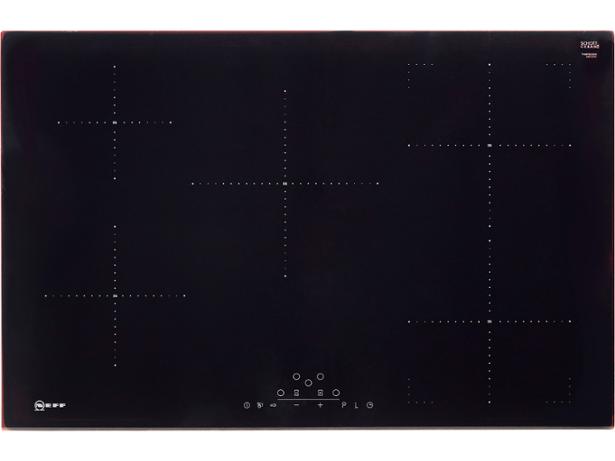How we test hobs

We test around 40 hobs in our specialist laboratory each year. But what exactly do we do to them, and why are Which? tests some of the most rigorous around?
Unlike free-to-access websites that typically get all the hobs they review free of charge directly from manufacturers, we buy all the appliances we test ourselves, so you can have complete trust in our verdict.
We test our hobs in a laboratory setting rather than a kitchen. The Which? overall percentage score is calculated purely on the measurements and ratings supplied by our test lab, meaning there's no room for bias when we give an overall rating.
To see which hobs do well in our lab tests, see our best hobs.
What are Best Buy, Great Value and Don't Buy hobs?

A quick guide to the recommendations you'll see on our hob reviews:
Best Buy hobs
The hobs that impress the most in our tests get our Best Buy recommendation.
Induction hobs need to score 82% or more to be a Best Buy, electric ceramic hobs 70% and gas (including gas-on-glass) hobs 65%.
Best Buy hobs typically do well in most, if not all, of our tests. They excel at heating quickly and are good at low-temperature simmering. They will also distribute heat evenly across the burner/cooking zone, which is important when you're cooking something you can't stir, such as a pancake or an omelette. They should also be a breeze to keep clean.
Great Value hobs
If you're looking to keep costs down, our Great Value recommendations are for you.
Great Value hobs are
Some Great Value hobs also score highly enough to be Best Buys.
Don't Buy hobs
We think that any hobs that score 45% or less should be avoided, so we highlight them as Don't Buys.
Don't Buy hobs are beset with flaws, so don't expect them to do a good job of heating up your food.
Head to our hob reviews to find out which ones come out top of our testing.
How is the Which? score calculated?
The Which? overall score is a percentage. This score only takes into account the results of our tests and ignores price completely.
This means that all hobs are tested on exactly the same scale, so you can compare any model at any price and know how it measures up against its rivals in key areas. All hobs are tested in the same way, regardless of the manufacturers’ claims.
Weightings and star ratings
A Which? test score is made up of dozens of individual tests and checks, including key factors such as performance, ease of use and cleaning, and energy use.
To keep things simple, the most important scores are shown as star ratings out of five on each hob's Test Results page as an easy-to-compare list of strengths and weaknesses, so you can quickly work out whether a model is right for you.
We consider certain tests to be more important than others, so we weight them differently. We think it's crucial that a hob is good at heating, simmering and frying, so these account for a larger part of the test score. The score is broken down in the following way:
- 50% performance
- 25% ease of use
- 20% ease of cleaning
- 5% energy efficiency
Our testing criteria

These are our key hob-testing categories and how we evaluate each one:
Performance
Key question: How well does the hob heat up?
To see how quick and efficient a hob is, we time how long it takes to heat a pan of water from room temperature to 90°C. We also record how much energy it uses in the process.
The best hobs take less than four minutes to heat 1.5 litres of water, while the worst take closer to 11 minutes to do the same job.
Key question: How good is the hob at simmering?
To find out just how gently a hob can heat and to see how responsive the controls are, we heat a pan of baked beans and then leave it so it stays just-warm.
The best hobs are very easy to control and adjust, while the worst are harder to control and could leave some of your beans stuck to the base of the pan.
Key question: What's it like at frying?
To see how well heat spreads across the base of a pan, we heat a frying pan to 200°C and then take a photo with a thermal imaging camera. This shows how far the heat has spread and identifies any cold sections.
The best hobs will heat the base of the pan evenly, and so produce a perfect pancake, but the worst will leave some areas much cooler.
Performance makes up 50% of a hob's total test score.
Ease of use
Key question: How easy is it to use?
We use a panel of three experts at the Which? test lab to find out how easy each hob is to use.
We assess how easy it is to operate the controls, check how clear the markings are and see whether there’s enough space to use all cooking zones at the same time. We also listen out for any unusual or irritating noises.
Ease of use makes up 25% of a hob's total test score.
Ease of cleaning
Key question: How easy is it to clean?
To see how easy each hob is to clean, we heat cooking oil and allow it to splatter on the burners, and we also allow a pan of rice to boil over.
The grimy hobs are then left to dry overnight, after which we attempt to clean them with washing-up liquid and a sponge.
Ease of cleaning makes up 20% of a hob's total test score.
Energy efficiency
Key question: How energy efficient is it?
We assess how much energy a zone consumes when raising the temperature of a pan of water by 75°C. Based on this, we work out how efficient the hob is – as in how much energy is successfully directed at the base of the pan rather than escaping into the atmosphere.
From our testing, we know that an induction hob uses energy more efficiently than a gas, electric ceramic or solid-plate hob. Gas hobs are the least energy efficient of the three main types. A significant amount of heat is lost heating up your kitchen, rather than your food. However, because gas is cheaper, you might save a few pounds a year with a gas hob over an electric one.
Energy efficiency makes up 5% of a hob's total score.
Pick the perfect hob with Which? reviews
Only a small proportion of hobs score highly enough to become Which? Best Buys. And money is not a reliable indicator of quality – we've tested some high-end models that give disappointing cooking results, despite costing hundreds of pounds.
We can help you to steer clear of lacklustre hobs that burn your bacon and are a pain to clean.
Go to our hob reviews to discover the best and worst models of each cooker hood type.


